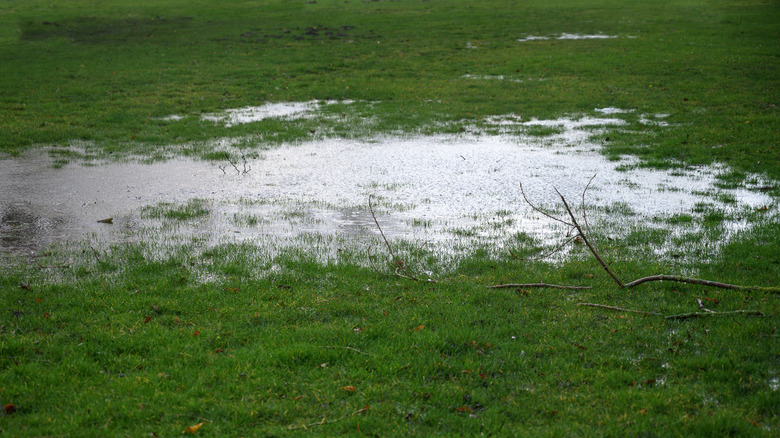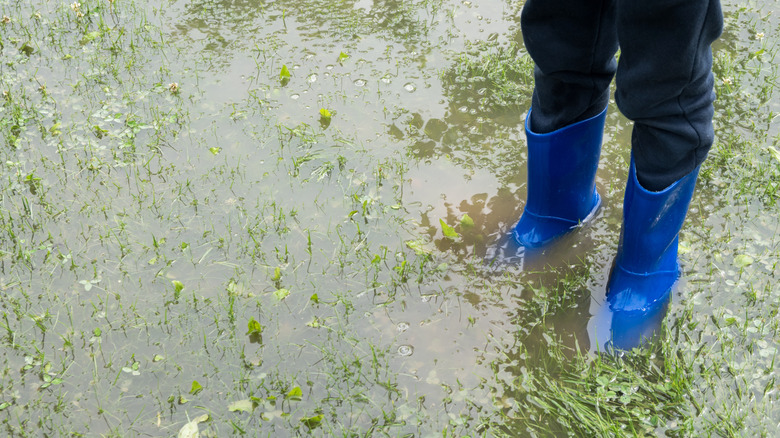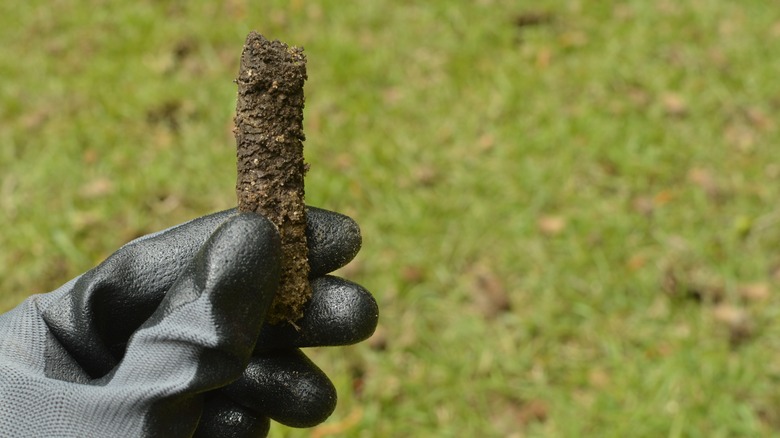The Best Way To Fix A Waterlogged Lawn
If you've ever walked on a lawn and it feels more like a sponge than lush, green grass, then it is likely waterlogged. Waterlogged lawns can be a nightmare for homeowners since they develop large puddles that leave your grass struggling for oxygen to stay alive. While there's no miracle cure for a waterlogged lawn, explains Eco Sustainable Solutions, there are definitely steps that a homeowner can take to get their lawn back on the right track.
Since waterlogged lawns are most commonly caused by their inability to drain water, the first thing you want to think about is aerating your lawn. This will not only help water drain after the next storm but allow your soil to maintain its oxygen levels so that your grass can thrive thanks to a steady supply of oxygen. If your lawn is prone to getting waterlogged, aeration should be carried out at least once or twice a year.
Prepping your lawn for aeration
There are a couple of reasons your lawn may need to be aerated in order to prevent waterlogging. If waterlogging only occurs in specific, high-traffic areas, it's likely that human activity has caused the underlying soil to become compacted to the point where it's not draining well. According to Greensleeves, it's also possible that your soil is just prone to flooding due to high clay content. Whichever is the case, starting a yearly aeration routine will allow your soil to breathe easier, even when seasonal storms provide plenty of rain.
However, aerating your lawn will do no good if it's currently spongy and waterlogged. Until your lawn has sufficiently dried, try to avoid walking on it as much as possible. This is because walking on a waterlogged lawn can severely damage your grass, making your task all the more difficult. If some much-needed sunshine isn't enough to fully dissipate the puddles in your yard, Bob Vila suggests that you can move some of the water toward the edges of your lawn using a broom. Once your lawn is no longer soggy but still retains some moisture, you can begin aerating.
Aerating your lawn
Since hollow-tine aeration works extremely well on compacted lawns, per The Lawn Man, this should likely be your first choice for dealing with a waterlogged lawn. Unlike other types of aeration, hollow-tine aeration physically removes plugs of soil, which greatly aids in your lawn's ability to drain properly. While you can also use an ordinary lawn fork or aerator shoes (per Eco Sustainable Solutions), the drainage benefits that these tools provide might not be on par with hollow-tine aeration of your lawn's most problematic areas.
If waterlogging has already caused portions of your lawn to die from a lack of oxygen, you will want to thoroughly re-seed these areas after aerating. According to Greensleeves, this can afford your soil a more complex and deep root system in its most compacted areas. While this will cause your lawn to look more uniform and beautiful, a complex root system will also pay dividends once your lawn has to contend with heavy rains. Since a healthy lawn's deep root system helps prevent the underlying soil from compacting, overseeding problem areas in your soil can help prevent future waterlogging.


